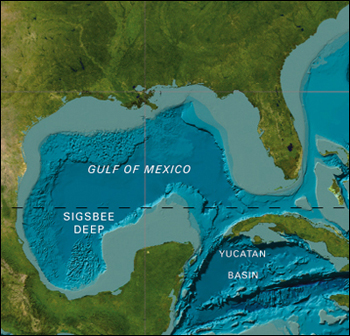
Plate tectonics is a cornerstone of geology, fundamentally shaping the Earth’s surface. One central concept in plate tectonics is the distinction between active and passive continental margins. Understanding which coast represents an active continental margin offers profound insights into geological processes, seismic activities, and the biological diversity of marine habitats. This article meticulously examines the characteristics of active continental margins, drawing comparisons with passive margins, to illuminate the broader implications for Earth’s geographical and ecological landscapes.
Active continental margins are located at convergent or transform plate boundaries where tectonic plates are in constant motion. This dynamic interaction creates a landscape characterized by geological tumult. One of the most prominent examples of an active continental margin is the western coast of North America, particularly along the Pacific Coast, stretching from Alaska down to California. This area is not just a geographical location but a vivid tapestry illustrating the forces of plate tectonics.
At the heart of this active margin lies the juxtaposition of the Pacific Plate and several smaller plates such as the Juan de Fuca Plate and the North American Plate. The Pacific Plate’s relentless movement against these continental masses instigates various geological phenomena, such as earthquakes and volcanic activity. This seismic interplay is particularly pronounced in regions like the San Andreas Fault, where the stress accumulated from plate interactions manifests as devastating earthquakes, which serve as a stark reminder of nature’s power.
Conversely, passive continental margins, often found on the eastern coast of continents, lack such dramatic geological activity. The east coast of North America exemplifies this stability, characterized by a wide continental shelf and gradual seabed gradients. Here, the continental crust transitions smoothly to oceanic crust without the intense upheaval observed on active margins. This absence of tectonic dynamism has led to a different ecological environment, one that fosters stable habitats and diverse marine life but lacks the spectacular geological formations associated with active margins.
From a geological perspective, the differences between active and passive margins are striking. Active margins are often characterized by deep ocean trenches, volcanic arcs, and mountain ranges, all products of the converging or sliding plates. The Cascade Range, which includes notable volcanoes like Mount St. Helens, represents a direct outcome of this tectonic engagement, showcasing the Earth’s raw power. Additionally, trench systems, such as the Aleutian Trench, are both fascinating and alarming, as they are hotspots for seismic activity and can generate tsunamis due to underwater earthquakes.
Moreover, the biological implications of these geological distinctions are significant. Active margins often boast rich ecosystems supported by upwelling currents, which bring nutrient-rich waters from the deep ocean to the surface. This phenomenon nurtures a diverse array of marine life, creating vibrant fishing grounds and complex ecosystems. In contrast, the more stable environments of passive margins favor different species, leading to ecological niches that are distinct yet equally important for biodiversity.
In addition to biological richness, active continental margins play a pivotal role in the earth’s climatic systems. The orographic effects of coastal mountain ranges influence regional weather patterns, driving rainfall and affecting the distribution of flora and fauna. The Coastal Ranges of California, fed by moisture from the Pacific Ocean, create lush environments unique to this tectonically active region. Such relationships illustrate the intricate connection between geological features, climate, and ecosystems.
Seismology plays a crucial role in our understanding of these dynamic coastlines. The study of earthquakes provides insights into the underlying tectonic processes at work. Seismologists utilize intricate models to predict earthquake zones and understand the risks associated with living along active margins. This scientific effort not only enhances public safety but also contributes to a deeper understanding of how tectonic activity shapes the world over geological timeframes.
Furthermore, the allure of active margins extends beyond their immediate geological and ecological significance. They are also sites of cultural and historical importance. Indigenous communities have long inhabited these coastal areas, deeply connected to the rhythms of nature shaped by tectonic forces. Their cultural knowledge offers unique perspectives on the interplay between humanity and the dynamic forces of the Earth.
In summation, when contemplating “Which Coast Represents an Active Continental Margin,” the Pacific Coast of North America emerges as a prime specimen of tectonic activity. Its geological features, seismic risks, biological diversity, and cultural significance embody the complex interplay of Earth’s processes. Awareness of this active margin not only enriches our understanding of geological phenomena but also inspires a greater appreciation for the natural world, highlighting our role in safeguarding these vital ecosystems amidst the relentless forces of nature.
As we delve deeper into the science of plate tectonics, the fascination with active continental margins only intensifies. These coasts remind us of the Earth’s dynamic nature, urging us to explore, understand, and respect the powerful processes that continuously shape our planet.
